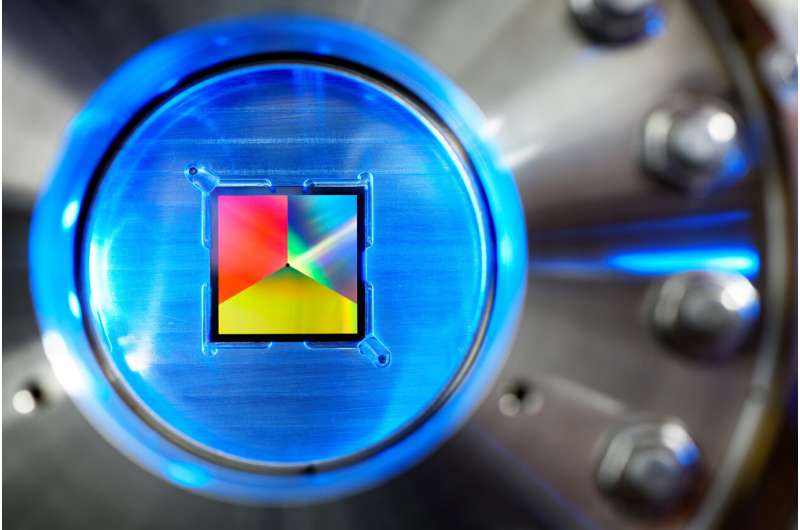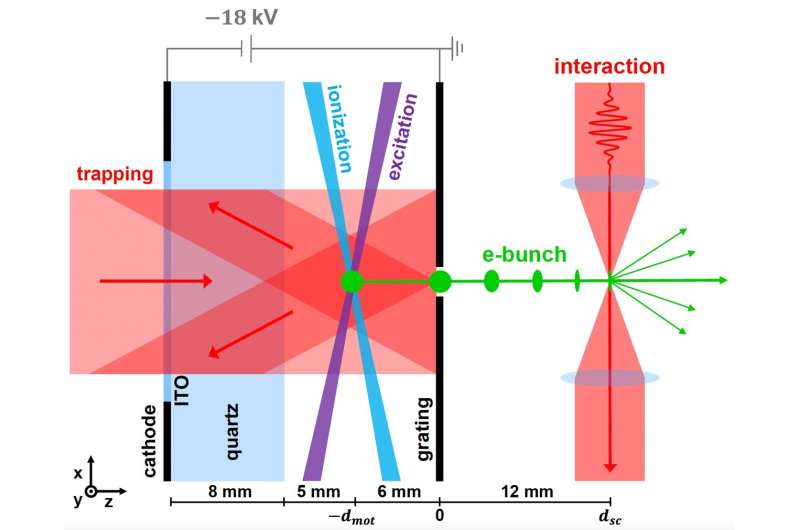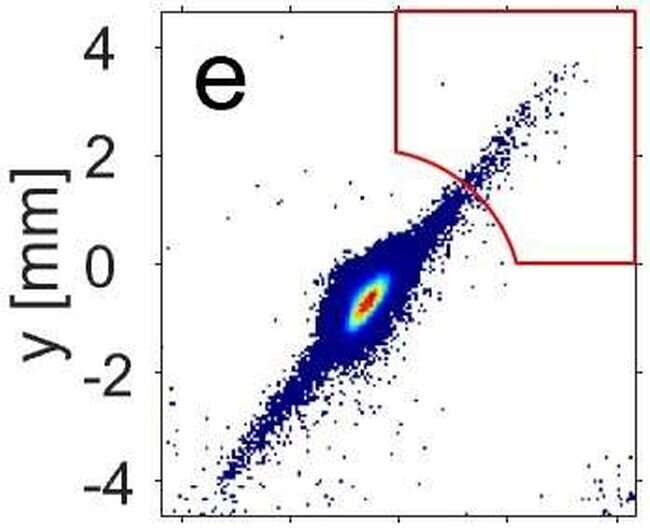May 26, 2023 feature
This article has been reviewed according to Science X's editorial process and policies. Editors have highlighted the following attributes while ensuring the content's credibility:
fact-checked
peer-reviewed publication
trusted source
proofread
The first experimental observation of subpicosecond electron bunches originating from an ultracold source

Identifying new sources that produce electrons faster could help to advance the many imaging techniques that rely on electrons. In a recent paper published in Physical Review Letters, a team of researchers at Eindhoven University of Technology demonstrated the scattering of subpicosecond electron bunches from an ultracold electron source.
"Our research group is working to develop the next generation of ultrafast electron sources to push imaging techniques such as ultrafast electron diffraction to the next level," Tim de Raadt, one of the researchers who carried out the study, told Phys.org.
"The idea of using laser-cooled ultracold gas clouds as an electron source to improve the state-of-the-art in brightness was first introduced in a paper published in 2005. Since then, research efforts have produced multiple versions of such a ultracold electron source, with the most recent one (used in this work) focusing on making the source compact, easy to align and operate, and being more stable, as described in another past paper that also studied the transverse electron beam properties."
The primary objective of the recent work by de Raadt and his colleagues was to further assess the performance of the type of compact laser cooled ultracold source identified in their previous work, particularly looking at its longitudinal beam properties. By better understanding the physics behind this source, they could optimize its performance and enable its use to advance imaging techniques.

The researchers' source was created by photoionizing laser-cooled rubidium gas in a grating magneto-optical trap via a two-step process. In the self-compression point of this source, they measured electron bunches as short as 735±7 fs (rms).
"We fired a very intense femtosecond laser pulse onto the electron bunch at the position in which the electron bunch has the shortest bunch length," de Raadt explained. "When the laser pulse hits the electrons, it can scatter them out of the bunch, which is called 'ponderomotive scattering.' With the electron camera at the end of the beamline we can see these electrons that have been kicked out of the bunch as two stripes coming out of the electron bunch."
If the researchers shot their laser pulse onto an electron bunch too soon or too late, they would not hit it and would thus fail to see the desired outwards electron scattering. In their experiments, they tried to determine for how long they would be able to scatter these electrons (i.e., measuring the length of the electron bunch), by slowly changing the delay time between the firing of the laser pulse and the electron bunch. This experiment showed that the electron bunch originating from their source was in the subpicosecond scale, which had never been observed before.

"We found that the longitudinal beam quality (emittance) is not limited by the electron temperature, as is the case for the transverse beam quality (emittances), but rather by the combination of the ionization process (the way in which the electrons leave the atoms) and the energy spread," de Raadt said.
"Furthermore, since it turns out the ionization process itself takes about a picosecond, there is no need for us to use a femtosecond ionization laser pulse. We can thus increase the ionization laser pulse length by a factor of ten without impacting the electron bunch length (longitudinal quality), which allows us to use a narrower band and more precise laser wavelength. This opens a new way to improve the transverse beam quality (emittance)."
The recent work by de Raadt and his colleagues highlights the value of the compact ultracold source they realized for producing ultrafast electron bunches. In addition, after their studying the physics and properties of this source further, the team can now predict how short its electron pulses will be with high precision. This in turn allows them to shorten these pulses at the expense of energy spreading through the source or vice-versa.
In the future, the findings gathered by this team of researchers could pave the way for the development of highly performing imaging techniques that could advance research in numerous fields. In their next studies, de Raadt and his colleagues will start exploring some of the most promising applications of the electron source.
"Now that the physics behind the ultracold electron source is well understood, and the properties have been measured, the source is moving from an experimental proof of principle to a reliable electron source," de Raadt added.
"This source can be used for various exciting applications, such as potentially single-shot, ultrafast electron crystallography of proteins, which would be revolutionary. As a new novel application, this source would be ideally suited as injector for dielectric laser acceleration. Our future studies will therefore be focused on applications that are only possible using the unique properties of this source."
More information: T. C. H. de Raadt et al, Subpicosecond ultracold electron source. Physical Review Letters(2023). DOI: 10.1103/PhysRevLett.130.205001.
Journal information: Physical Review Letters
© 2023 Science X Network




















